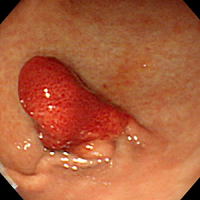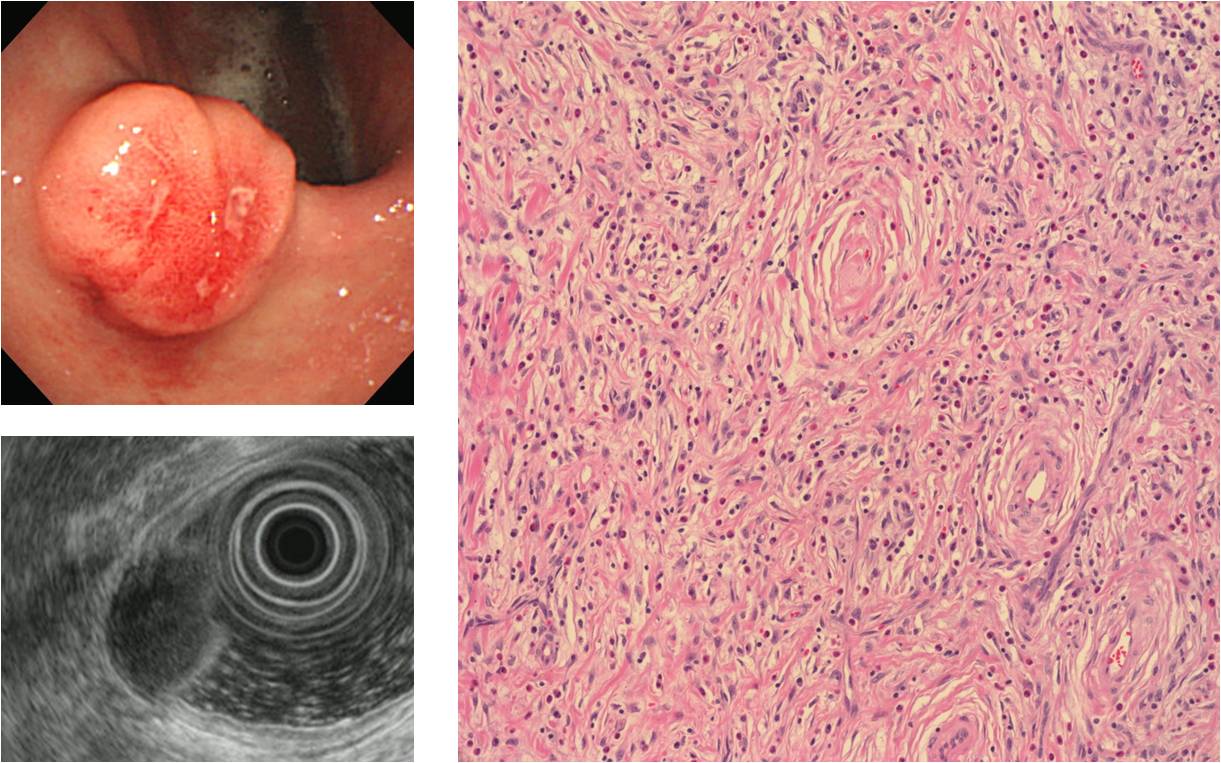 EndoTODAY 내시경 교실
EndoTODAY 내시경 교실
Beginner | ESA | Schedule | OPD
Seminars | Atlas | Recent | Links
 [일원내시경교실 목요점심집담회 2016-5-19]
[일원내시경교실 목요점심집담회 2016-5-19]
건진에서 매년 Candidasis가 나와 의뢰되어 매년 fluconazole을 드렸다고 합니다. 그런데 몇 년 연속 나오다가 어느 해부터 나오지 않았습니다. 어찌된 영문인지 알 수 없습니다. 면역저하환자가 아닌 경우 무증상식도캔디다증은 중요한 질병으로 진행하지 않는 self-limited disease가 분명한 것 같습니다. 검사하고 결과판독을 하는 의사가 잘 설명하고 의뢰하지 않으면 치료하지 않고 경과관찰을 할 수 있습니다. 그러나 일단 환자를 의뢰받으면 치료하지 않기는 어렵습니다.
관련하여 최근 건국대학교 병원에서 무증상 식도 칸디다증의 자연 경과에 대한 논문을 발표한 바 있습니다 (Lee SP. Scand J Gastroenterol 2015). 치료가 필요하지 않다는 결론입니다.
MATERIALS AND METHODS: A total of 49,497 subjects who underwent a health inspection that included upper endoscopy were enrolled. We retrospectively reviewed the subject's self-reporting questionnaires, medical records and endoscopic findings. We considered "long-term" follow-up to be >6 months with at least one more follow-up endoscopy.
RESULTS: One hundred and seventy (0.4%) subjects were endoscopically diagnosed as esophageal candidiasis and 141 subjects were AEC. Multivariate analysisrevealed that old age (≥60 years) was an independent risk factor for AEC (OR, 1.862, p = 0.005). The number of subjects with long-term follow-up was 79 (195.3 person-years). Among these, AEC of 64 subjects (81.0%) had disappeared on the follow-up endoscopy and was not recurrent. The other 15 subjects had AEC diagnosed more than once on the follow-up endoscopy, and 5 of them were spontaneously healed during the follow-up period. The remaining 10 subjects whose candidiasis was sustained up to the last endoscopy did not complain of symptoms during the follow-up period, and their endoscopic findings did not worsen.
CONCLUSIONS: AEC is rare and old age is the only risk factor. AEC (asymptomatic esophageal candidiasis) does not require medical care because it is a self-limited disease.
저는 내시경 검사 도중 무증상 식도 캔디다증은 슬쩍 무시하기도 합니다. 피부과 의사가 모든 점에 대하여 comment 하지 않는 것처럼...
* 참고: EndoTODAY 식도칸디다증
 2. Inflammatory fibrinoid polyp
2. Inflammatory fibrinoid polyp

Inflammatory fibrinoid polyp은 gastric submucosal granuloma with eosinophilic infiltration, eosinophilic granuloma, hemangiopericytoma, fibroma, inflammatory pseudotumor 등 다양한 이름으로 불렸던 종양입니다. 조직학적으로 섬유조직, 혈관, 호산구를 포함한 많은 염증세포들로 구성되어 있고 국소적인 비신생성 성장을 하는 질환입니다. 주로 위에 발생하지만 드물게 소장, 대장, 식도에서도 발생할 수 있습니다. 악성변화는 보고된 바 없습니다. 위내시경에서는 주로 pedunculated polyp의 형태가 많은데 SMT와 비슷하게 보이는 경우도 있습니다.
IFP arises from submucosa of the GI tract. It consists of loose connective tissue with a rich vasculature and abundant fibrous component. Usually the lesion was sessile or polypoid with ulceration of the overlying mucosa.
 SMT처럼 보였던 경우이고 wedge resection으로 확진할 수 있었습니다. 수술전 impression은 GIST였습니다.
SMT처럼 보였던 경우이고 wedge resection으로 확진할 수 있었습니다. 수술전 impression은 GIST였습니다.
Stomach, subtotal gastrectomy:
Early gastric carcinoma
1. Location : lower third, Center at angle and anterior wall
2. Gross type : EGC type IIa
3. Histologic type : tubular adenocarcinoma, poorly differentiated
4. Histologic type by Lauren : diffuse
5. Size : 2.1x1.2 cm
6. Depth of invasion : invades mucosa (muscularis mucosae) (pT1a)
7. Resection margin: free from carcinoma, safety margin: proximal 3 cm, distal 5 cm
8. Lymph node metastasis : no metastasis in 32 regional lymph nodes (pN0)
9. Lymphatic invasion : not identified
10. Venous invasion : not identified
11. Perineural invasion : not identified
 4. Recurrent ulcer with outlet obstruction
4. Recurrent ulcer with outlet obstruction
빈혈과 어지러움으로 내원하셨습니다. 혈색소는 7이었고 철은 5였습니다. 조직검사에서는 Hp (+) gastritis로만 나와 제균치료와 위산분비억제제를 투여하였습니다. 환자가 잠시 follow up loss된 후 다시 오셨는데 아래 사진과 같았습니다. 헬리코박터가 제균되지 않은 상태였고 추가치료 후 호전되었습니다.
저는 암으로 판단하였는데 최종 결과가 recurrent ulcer로 나와 조금 창피했습니다. 위암과 위궤양의 구분은 늘 어렵습니다. 내시경을 25년째 하고 있는데 여전히 어렵습니다.
A colon의 LST입니다. 조직검사가 hyperplastic polyp으로 나왔으나 EMR을 하였고 최종 결과는 serrated adenoma로 나왔습니다.
* 참고: EndoTODAY Serrated adenoma
1) SMC Endoscopy Unit 삼성서울병원 내시경실
2) SMC Monday GI conference 삼성서울병원 일원내시경교실 월요점심소화기집담회
3) SMC Thursday endoscopy conference 삼성서울병원 일원내시경교실 목요점심내시경집담회
© EndoTODAY Endoscopy Learning Center. Jun Haeng Lee.